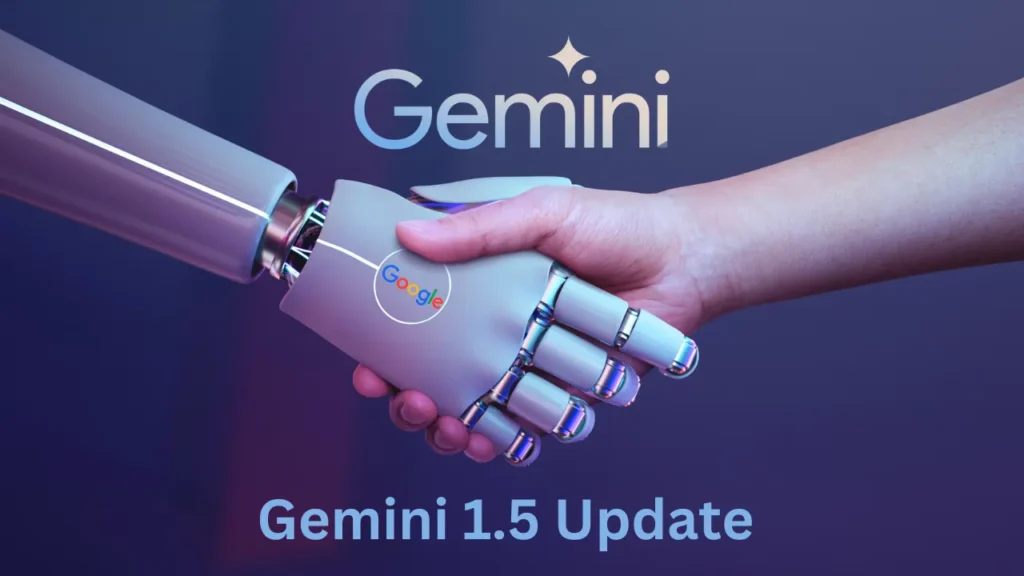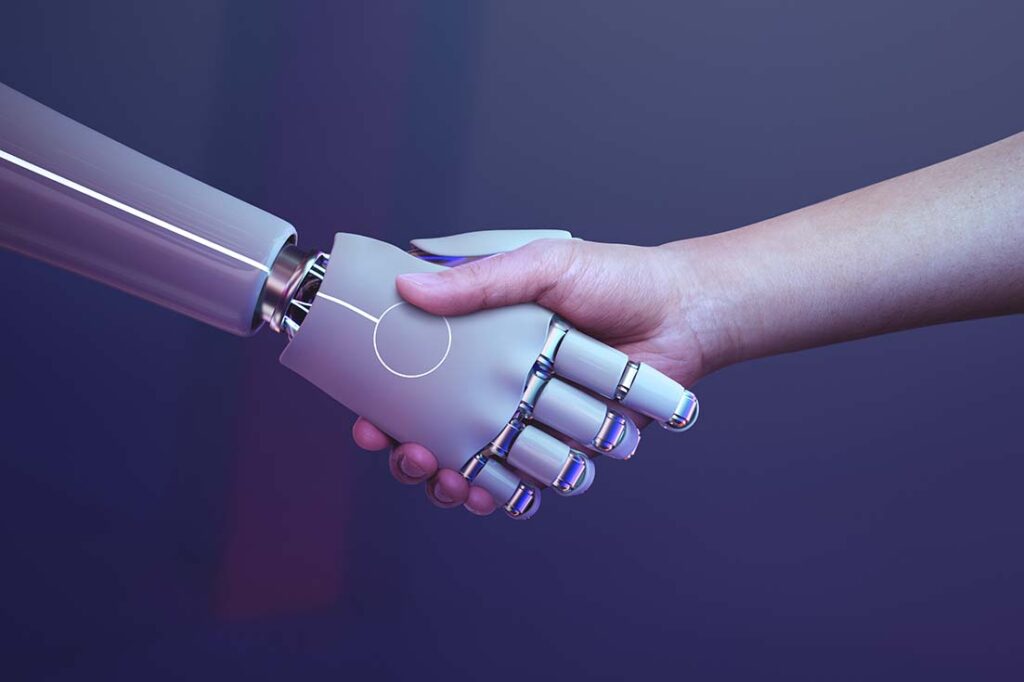What is Deep Learning – A Strategic Guide for Business Innovation

Contents
Deep learning is a subfield of machine learning that focuses on the development and deployment of advanced artificial intelligence (AI) systems. At its core, deep learning leverages deep neural networks, which are composed of multiple layers of interconnected nodes or artificial neurons. These intricate networks enable the creation of sophisticated deep learning models that excel at learning intricate patterns and representations from vast datasets.
The foundation of DL models lies in the utilization of deep learning algorithms, which are specialized mathematical constructs designed to optimize the parameters of neural networks. These algorithms facilitate the training process by iteratively adjusting the weights and biases within the network, allowing it to progressively refine its ability to recognize and interpret complex patterns. This iterative optimization is a fundamental characteristic of deep learning, distinguishing it from traditional machine learning approaches.
What is Deep Learning - Application
The practical applications of deep learning span across various industries, showcasing its versatility and efficacy. DL applications have demonstrated significant breakthroughs in fields such as computer vision, natural language processing, and speech recognition. For example, in computer vision, deep learning models have excelled at image classification, object detection, and facial recognition, achieving unprecedented levels of accuracy and efficiency.
One notable application of DL models is in the realm of natural language processing, where they have been instrumental in powering advancements such as sentiment analysis, language translation, and chatbot development. These deep learning examples highlight the adaptability of the technology in handling complex tasks that were once deemed challenging for traditional machine learning approaches.
What is Deep Learning – Use Cases
Deep learning applications span a wide array of fields, showcasing its versatility and effectiveness. In the realm of computer vision, DL models have demonstrated remarkable success in image recognition, object detection, and facial recognition. These deep learning examples highlight the capability of neural networks to discern intricate patterns within visual data
Moreover, deep learning algorithms have made substantial contributions to natural language processing tasks, such as machine translation, sentiment analysis, and speech recognition. The utilization of deep learning in these applications underscores its adaptability and efficiency in processing complex, unstructured data.
In summary, while machine learning serves as the overarching umbrella for various learning algorithms, deep learning distinguishes itself through the utilization of intricate neural networks with multiple layers. The application of deep learning models extends across diverse domains, showcasing their prowess in tasks ranging from image recognition to natural language processing. As technology continues to evolve, the interplay between deep learning and machine learning will likely drive advancements in AI, pushing the boundaries of what is achievable in the realm of intelligent systems.
What is Deep Learning - Advancements
Moreover, the widespread adoption of deep learning algorithms has fueled advancements in healthcare, finance, and autonomous systems. In healthcare, DL models are employed for medical image analysis, disease diagnosis, and drug discovery. In finance, these algorithms contribute to fraud detection, risk assessment, and algorithmic trading strategies. Autonomous vehicles, too, leverage deep learning for tasks like object recognition, path planning, and decision-making.
In conclusion, deep learning has emerged as a transformative force within the field of artificial intelligence, driven by the development of sophisticated DL models and the application of powerful algorithms of deep learning. The continuous evolution of this technology promises to unlock new possibilities and reshape the landscape of numerous industries through innovative deep learning applications.
Seamless Collaboration | Cost-Efficient Solutions | Faster Time-to-Market

Deep Learning vs Machine Learning
Deep learning and machine learning are two distinct branches within the broader field of artificial intelligence (AI). While both encompass a range of algorithms and applications, they differ in their underlying approaches and complexity.
Machine learning, as a broader concept, encompasses various algorithms that enable computer systems to learn from data and improve their performance over time without being explicitly programmed. Within machine learning, there are diverse techniques such as supervised learning, unsupervised learning, and reinforcement learning, each serving specific purposes across various domains.
In contrast, deep learning is a subset of machine learning that focuses specifically on neural networks with multiple layers, commonly referred to as DL models. These deep learning algorithms are designed to automatically learn hierarchical representations of data, allowing them to capture intricate patterns and features. One notable characteristic of deep learning models is their ability to extract and transform raw data into meaningful abstractions through multiple layers of neural networks.
Deep Learning Models – Introduction
Deep learning models refer to a subset of machine learning techniques that are characterized by the utilization of neural networks with multiple layers, known as deep neural networks. These deep learning models leverage sophisticated algorithms to automatically learn and extract hierarchical representations of data, enabling them to discern intricate patterns and features within large datasets.
Deep learning algorithms, which are the backbone of these models, play a pivotal role in the training process. These algorithms involve the iterative adjustment of the neural network’s parameters based on the input data, allowing the model to optimize its performance over time. The efficacy of algorithms of deep learning has been demonstrated across various domains, showcasing their versatility and power in handling complex tasks.
One of the notable DL applications is in computer vision, where models of deep learning excel at image recognition, object detection, and segmentation. For example, algorithms of deep learning have been employed in facial recognition systems, autonomous vehicles, and medical image analysis, showcasing their adaptability to diverse use cases.
In natural language processing, DL models have revolutionized language understanding, translation, and sentiment analysis. These applications underscore the robustness of deep learning algorithms in handling unstructured data, such as text, and extracting meaningful information.
Deep Learning Models – Further Advancements
Furthermore, DL models have found extensive use in speech recognition systems, enhancing the accuracy and efficiency of voice-controlled interfaces. The application of deep learning algorithms in speech processing has significantly improved the performance of virtual assistants and voice-command technologies.
In the field of finance, DL models are employed for predictive analytics, fraud detection, and algorithmic trading. These applications highlight the capability of algorithms of deep learning to analyze vast financial datasets and discern intricate patterns that may elude traditional analytical approaches.
In summary, DL models, powered by sophisticated algorithms of deep learning, have emerged as a cornerstone in various technological advancements. Their applications span across computer vision, natural language processing, speech recognition, and finance, showcasing their adaptability and effectiveness in addressing complex problems across diverse domains.
What are Deep Learning Algorithms
DL algorithms refer to a subset of machine learning techniques that involve the use of intricate neural networks, commonly known as deep learning models. These sophisticated models are characterized by multiple layers, allowing them to automatically learn hierarchical representations of data. Deep learning algorithms have gained prominence in recent years due to their remarkable ability to extract intricate patterns and features from vast and complex datasets.
One of the primary characteristics of DL models is their capacity to automatically learn and optimize hierarchical representations through the utilization of multiple layers. Algorithms of deep learning leverage neural networks with numerous interconnected nodes to process and analyze data in a way that mirrors the human brain’s structure. These algorithms excel in handling intricate tasks such as image and speech recognition, natural language processing, and other complex problems that traditional machine learning approaches may struggle with.
Deep Learning Algorithms - Applications
Deep learning applications span across various domains, showcasing the versatility and effectiveness of these algorithms. In the realm of computer vision, deep learning models have demonstrated remarkable performance in tasks such as image classification, object detection, and facial recognition. These applications highlight the adaptability and robustness of deep learning algorithms in handling diverse visual data.
Moreover, DL algorithms have found extensive use in natural language processing tasks. Through recurrent neural networks (RNNs) and transformer models, deep learning excels in language translation, sentiment analysis, and text generation. These applications underscore the broad spectrum of possibilities that deep learning opens up in understanding and processing human language
Deep Learning Algorithms in Industries
In the field of healthcare, deep learning algorithms are making significant strides, aiding in medical image analysis, disease diagnosis, and drug discovery. These models can analyze intricate medical images, such as MRI scans and X-rays, to assist healthcare professionals in making accurate and timely diagnosis.
Furthermore, deep learning examples can be observed in autonomous vehicles, where these algorithms play a pivotal role in tasks like object detection, lane keeping, and decision-making. The ability of models of deep learning to learn complex patterns from sensor data contributes to the development of robust and reliable autonomous systems
In conclusion, algorithms of deep learning, implemented through deep learning models, have become indispensable in various industries due to their unparalleled ability to handle complex tasks. The continuous advancements in this field continue to unlock new possibilities and reshape the landscape of artificial intelligence, demonstrating the profound impact of DL applications in our rapidly evolving technological landscape.
Seamless Collaboration | Cost-Efficient Solutions | Faster Time-to-Market

Deep Learning Applications
Deep learning applications encompass a wide range of use cases where sophisticated DL models and algorithms play a pivotal role in achieving remarkable results. Deep learning, a subset of machine learning, involves the utilization of neural networks with multiple layers to learn and make intelligent decisions from vast amounts of data. These DL models, empowered by intricate algorithms of deep learning, have demonstrated exceptional capabilities across various domains.
In DL applications, the deployment of cutting-edge deep learning models has become increasingly prevalent. These models, driven by intricate algorithms of deep learning, exhibit a remarkable capacity to discern patterns and features within data that might elude traditional machine learning approaches. Examples of deep learning applications span diverse sectors, showcasing the versatility and efficacy of models of deep learning and algorithms.
One prominent area where deep learning applications shine is in computer vision. DL models, leveraging convolutional neural networks (CNNs) and other sophisticated deep learning algorithms, have revolutionized image recognition, object detection, and facial recognition. Industries such as healthcare, security, and autonomous vehicles have witnessed transformative advancements, thanks to the deployment of these state-of-the-art DL applications.
Deep Learning Applications – Natural Language Processing
Natural language processing (NLP) is another domain where deep learning models and algorithms have made substantial contributions. DL applications in NLP, powered by recurrent neural networks (RNNs) and transformers, have facilitated significant breakthroughs in machine translation, sentiment analysis, and chatbot development. These deep learning examples underscore the profound impact of incorporating advanced models and algorithms into language-related tasks.
Deep Learning Applications in Industries
In the field of healthcare, DL applications have demonstrated their potential for image analysis, disease diagnosis, and drug discovery. Deep learning models, equipped with specialized algorithms, can analyze medical images, detect anomalies, and contribute to early disease identification. This integration of deep learning in healthcare showcases the immense value that arises from combining sophisticated models and algorithms to address complex challenges.
The financial sector has also embraced deep learning applications for fraud detection, risk assessment, and algorithmic trading. DL models, supported by robust algorithms, can analyze vast datasets in real-time, identifying unusual patterns and enhancing the accuracy of financial decision-making processes. These deep learning examples highlight the adaptability and efficacy of integrating advanced models and algorithms in the financial domain.
In summary, deep learning applications leverage the capabilities of advanced deep learning models and algorithms to address complex challenges across various sectors. The continuous evolution and refinement of these models contribute to the ongoing advancement in applications of deep learning, ensuring their relevance and impact in diverse fields.
Benefits of Deep Learning
Deep learning, a subset of machine learning, has gained significant attention and popularity due to its ability to automatically learn representations from data without explicit programming. Here are some key benefits of deep learning:
- Feature Learning and Representation: Deep learning models can automatically learn hierarchical representations of data, extracting meaningful features at different levels of abstraction. This eliminates the need for manual feature engineering, as the model learns to represent the data in a way that is most relevant to the task.
- Handling Complex Data: Deep learning excels in handling large and complex datasets, such as images, audio, and text. Convolutional Neural Networks (CNNs) are particularly effective in image and video analysis, while Recurrent Neural Networks (RNNs) and Transformer models are powerful for sequential data like text.
- Improved Accuracy: Deep learning models, especially deep neural networks, can achieve state-of-the-art performance in various tasks, including image recognition, natural language processing, speech recognition, and more. The ability to learn intricate patterns and relationships in data contributes to high accuracy.
- End-to-End Learning: Deep learning models can be trained end-to-end, meaning they can learn to perform a task directly from raw input data to output predictions. This reduces the need for manual intervention and simplifies the overall development process.
- Adaptability and Generalization: Deep learning models have the capacity to generalize well to unseen data, making them adaptable to different tasks and domains. This capability is particularly valuable when dealing with real-world scenarios where data may vary.
- Automation of Feature Extraction: Deep learning automates the process of feature extraction, allowing the model to learn relevant features from the data. This is especially advantageous in scenarios where manual feature engineering would be time-consuming and challenging.
- Parallel Processing: Deep learning models can be trained efficiently on parallel computing hardware, such as Graphics Processing Units (GPUs) and Tensor Processing Units (TPUs). This accelerates the training process, making it feasible to train large and complex models.
- Transfer Learning: Pre-trained deep learning models can be fine-tuned for specific tasks with limited amounts of task-specific data. Transfer learning leverages knowledge gained from one task to improve performance on a related task, often resulting in faster convergence and improved accuracy.
- Versatility: Deep learning can be applied to a wide range of tasks, including image and speech recognition, natural language processing, autonomous vehicles, recommendation systems, and more. This versatility makes deep learning a powerful tool across various domains.
Despite these benefits, it’s important to note that deep learning also comes with challenges such as the need for large amounts of labeled data, computational resources, and interpretability issues. However, ongoing research aims to address these challenges and further enhance the capabilities of models of deep learning.
Challenges of Deep Learning
Deep learning has shown remarkable success in various applications, but it also comes with its set of challenges. Some of the key challenges of deep learning include:
1- Data Quality and Quantity:
Deep learning models require large amounts of labeled data for training. Obtaining high-quality, diverse, and well-labeled datasets can be challenging, especially in domains where data is scarce or expensive to collect.
2- Computational Resources:
Training deep learning models can be computationally intensive and may require powerful hardware, such as GPUs (Graphics Processing Units) or TPUs (Tensor Processing Units). This can be a barrier for individuals or organizations with limited resources.
3- Overfitting:
Deep learning models, especially complex ones, are prone to overfitting, where they perform well on the training data but fail to generalize to new, unseen data. Techniques like regularization and dropout are employed to mitigate overfitting, but it remains a persistent challenge.
4- Interpretability:
Deep learning models are often considered as “black boxes” due to their complex architectures. Understanding and interpreting the decisions made by these models is challenging, which can be a significant concern in applications where interpretability is crucial (e.g: healthcare, finance).
5- Transfer Learning and Domain Adaptation:
Transferring knowledge from one task or domain to another (transfer learning) can be challenging. Models trained on one type of data may not generalize well to different data distributions or tasks. Domain adaptation techniques aim to address this challenge but may not always be straightforward.
6- Hyperparameter Tuning:
Choosing the right set of hyperparameters (e.g., learning rate, batch size) is crucial for the success of deep learning models. Manual tuning can be time-consuming, and automated methods may not always find the optimal configuration for a specific problem.
7- Ethical and Bias Concerns:
Deep learning models can inherit biases present in the training data, leading to unfair or discriminatory outcomes. Ensuring fairness and addressing ethical concerns in AI systems is an ongoing challenge that requires careful consideration and mitigation strategies.
8- Robustness to Adversarial Attacks:
Deep learning models are susceptible to adversarial attacks, where small, carefully crafted perturbations to input data can lead to incorrect predictions. Developing models that are robust to such attacks is an active area of research.
9- Long Training Times:
Deep learning models are susceptible to adversarial attacks, where small, carefully crafted perturbations to input data can lead to incorrect predictions. Developing models that are robust to such attacks is an active area of research.
10- Lack of Understanding of Inner Workings:
Understanding why a deep learning model makes a specific decision can be challenging. This lack of transparency can be a drawback in safety-critical applications where a clear understanding of the model’s decision-making process is essential.
Addressing these challenges requires ongoing research and collaboration across various domains, including machine learning, computer vision, natural language processing, and ethics in AI.

Author Bio
Frequently Asked Questions (FAQs)
What is deep learning?
A concerned question, “What is deep learning”, deep learning is a subset of machine learning that employs neural networks with multiple layers (deep neural networks) to automatically learn hierarchical representations of data. In essence, it’s a sophisticated approach to machine learning, but what distinguishes it is the depth of its neural network architectures.
What is an example of value created through the use of deep learning?
A concerned question, “What is an example of value created through the use of deep learning?”, an example of value created through the use of deep learning is the ability to analyze vast datasets for medical research, enabling accurate disease diagnosis and personalized treatment plans. How deep learning extracts insights from complex information enhances healthcare outcomes and advances medical science.
Which are common applications of deep learning in artificial intelligence (AI)?
A concerned question, “Which are common applications of deep learning in artificial intelligence (AI)?”, deep learning, a subset of artificial intelligence (AI), finds common applications in various fields. These include image and speech recognition, natural language processing, autonomous vehicles, and medical diagnosis. The versatility of deep learning enables its integration into diverse AI domains, enhancing system performance and capabilities.
How does deep learning work?
Deep learning is a subset of machine learning where artificial neural networks simulate the human brain’s interconnected neurons. Through layers of interconnected nodes, deep learning models learn patterns, features, and representations from data, enabling them to make predictions or classifications, answering the question of “How does deep learning work?”
How to learn deep learning?
To learn deep learning, start with fundamental concepts like neural networks. Explore online courses, read relevant literature, and practice by implementing models. Engage in real-world projects, join communities for discussions, and continuously experiment. How to learn deep learning? Embrace theory, hands-on experience, and community collaboration.
What is an example of value created through the use of deep learning?
A concerned question, “What is an example of value created through the use of deep learning?”, deep learning has revolutionized image recognition, exemplified by its use in facial recognition technology. The ability to accurately identify and authenticate individuals has created significant value, enhancing security measures and streamlining various applications, from unlocking smartphones to airport check-ins.
When was deep learning invented?
Deep learning, a subset of machine learning, was invented with the question: When was deep learning invented? Its origins can be traced back to the 1940s and 1950s, but significant advancements in neural networks and training techniques occurred in the 21st century, notably around 2012.
Why is deep learning important?
A concerned question, “Why is deep learning important”, deep learning is crucial because it enables machines to autonomously learn intricate patterns from vast data sets, mimicking human cognitive processes. By deciphering complex relationships, it revolutionizes fields like image recognition, natural language processing, and decision-making, driving advancements across diverse industries.




